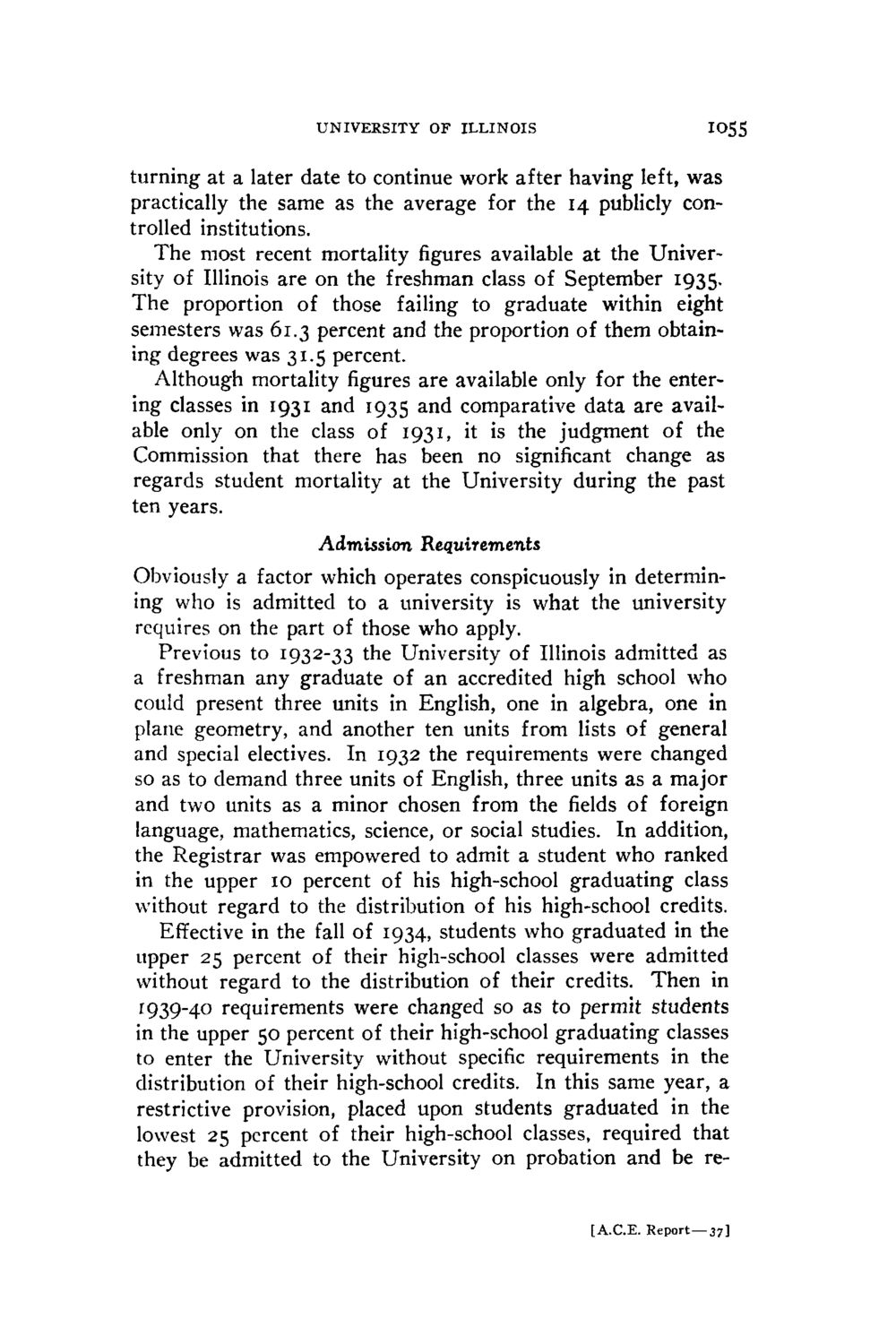| |
| |
Caption: Board of Trustees Minutes - 1944
This is a reduced-resolution page image for fast online browsing.

EXTRACTED TEXT FROM PAGE:
U N I V E R S I T Y OF I L L I N O I S IOSS turning at a later date to continue work after having left, was practically the same as the average for the 14 publicly controlled institutions. The most recent mortality figures available at the University of Illinois are on the freshman class of September 1935. The proportion of those failing to graduate within eight semesters was 61.3 percent and the proportion of them obtaining degrees was 31.5 percent. Although mortality figures are available only for the entering classes in 1931 and 1935 and comparative data are available only on the class of 1931, it is the judgment of the Commission that there has been no significant change as regards student mortality at the University during the past ten years. Admission Requirements Obviously a factor which operates conspicuously in determining who is admitted to a university is what the university requires on the part of those who apply. Previous to 1932-33 the University of Illinois admitted as a freshman any graduate of an accredited high school who could present three units in English, one in algebra, one in plane geometry, and another ten units from lists of general and special electives. In 1932 the requirements were changed so as to demand three units of English, three units as a major and two units as a minor chosen from the fields of foreign language, mathematics, science, or social studies. In addition, the Registrar was empowered to admit a student who ranked in the upper 10 percent of his high-school graduating class without regard to the distribution of his high-school credits. Effective in the fall of 1934, students who graduated in the upper 25 percent of their high-school classes were admitted without regard to the distribution of their credits. Then in 1939-40 requirements were changed so as to permit students in the upper 50 percent of their high-school graduating classes to enter the University without specific requirements in the distribution of their high-school credits. In this same year, a restrictive provision, placed upon students graduated in the lowest 25 percent of their high-school classes, required that they be admitted to the University on probation and be re- [A.C.E. Report—37]
| |